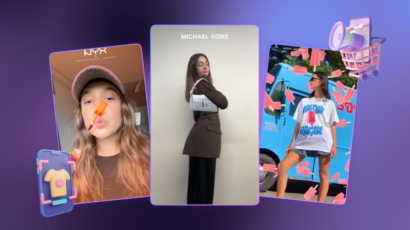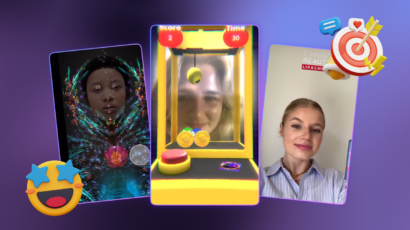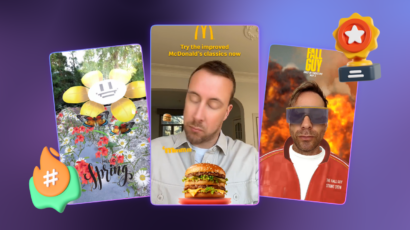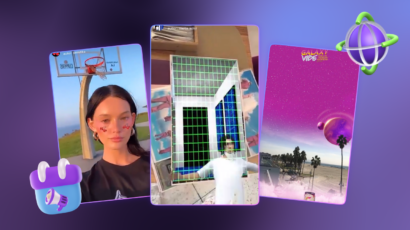Attracting and holding your audience’s attention is the ultimate goal of marketing in an information-rich society. In the competitive world of marketing, we face the difficult task of making an impression on our target audience in an ocean of content.
However, what difficulties do we have when producing and delivering content that really connects with people? In this day and age, when people’s attention spans are getting shorter than ever, how does the brain process and retain knowledge?
AR As Visual Imperative: The Power of Three Dimensions
Visual orientation is ingrained in our minds. Studies indicate that visual information is processed by our brains far faster than textual information, and pictures are more likely to stick in our memories. In the struggle for focus, the question becomes: Which kind of visual stimulus – 2D or 3D – grabs attention more powerfully?
Three dimensions hold the key to the answer. Because they are so striking and unusual, 3D images have a special power to hold our interest. Since the human brain is naturally driven to novelty, 3D graphics offer immersion and engagement that 2D visuals frequently find difficult to match.
This is the point at which Augmented Reality (AR) becomes prominent. By fusing the digital and real worlds, AR produces an engaging and dynamic experience. However, how can AR hold our attention and why does it succeed when other media fail?
The Neuroscientific Edge of AR
Neuroscientists believe that experiences involving many senses are built into the brain’s memory and prioritization processes. AR offers a multimodal experience that combines images with audio and occasionally haptic feedback, having a significant effect on our cognitive functions. Information is not just better kept but also profoundly embedded in our memory when our brains are actively engaged in the experience.
Through AR: From Attention to Trust
Making a lasting impression is crucial for success in the fast-paced field of marketing. With the use of augmented reality and 3D graphics, marketers can produce material that not only grabs readers’ attention but also sticks in their memories.
Think about it: What we remember becomes familiar, and what is familiar, we trust. Successful marketing is built on trust. Your audience is more inclined to make decisions about purchases without hesitation when they have trust in your brand. Therefore, your content’s memorability essentially paves the way from attention to trust.
Imagine a prospective buyer engaging with your goods via AR. They have the ability to not only perceive it but also control and interact with it in ways that go beyond conventional advertising techniques. As people get to know the product, trust is built. Customer behavior is significantly influenced by this trust.
The task facing marketers is not only to produce attention-grabbing content but also to design memorable experiences. In the age of augmented reality, the proverb “show, don’t tell” assumes a new meaning. Use AR to provide your audience with a firsthand experience with a product rather than just explaining its features. Permit consumers to interact with the product in a way that goes beyond the constraints of conventional marketing channels by letting them see the advantages, go into the specifics, and visualize it.
The method is straightforward, to use marketing speak: grab people’s interest, establish rapport, and foster trust. The thing that speeds up this process is augmented reality. Stronger trust is built between you and your audience when the encounter is unforgettable.
Wrapping up: Embracing AR for Lasting Impressions
Let’s embrace augmented reality’s ability to draw in and hold attention while we manage the difficulties presented by the attention economy. Invest in experiences that make an impression on your audience so that they will trust you and, in the end, convert.
Your next marketing effort should think about including augmented reality. Make use of AR to design memorable experiences, whether it’s a virtual try-on for clothing, a 3D representation of your newest technology device, or an immersive tour of your real estate packages. It’s important to keep in mind that in the era of attention deficit disorder, remembering is as important as seeing. This can be accomplished with the help of augmented reality. Don’t hesitate to schedule a consultation for more insights.







